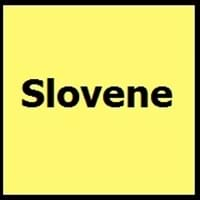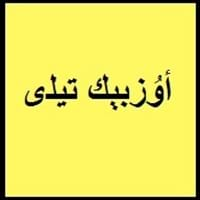Slovene and Uzbek
Countries
European Union, Slovenia
Turkey, Uzbekistan
National Language
Austria, Croatia, Hungary, Italy, Slovenia
Afganistan, China, Kazakhstan, Kyrgyzstan, Russia, Tajikistan, Turkmenistan, Uzbekistan
Second Language
Not spoken in any of the countries
Not spoken in any of the countries
Speaking Continents
Europe
Middle East
Minority Language
Austria, Hungary, Italy
Not spoken in any of the countries
Regulated By
Slovenian Academy of Sciences and Arts
Not Available
Interesting Facts
- The Freising Monuments is the oldest preserved records of written Slovene from 10th century.
- The first Slovene book was printed in 1550.
- Uzbek is officially written in the Latin script, but many people still use Cyrillic script.
- In Uzbek language, there are many loanwords from Russian, Arabic and Persian.
Similar To
Serbo-Croatian
Kazakh and Uyghur Languages
Derived From
Not Available
Not Available
Alphabets in
Slovene-Alphabets.jpg#200
Uzbek-Alphabets.jpg#200
Scripts
Latin
Arabic, Cyrillic, Latin
Writing Direction
Left-To-Right, Horizontal
Not Available
How Are You?
Kako se imate?
Qalay siz?
Good Night
Lahko noč
Hayirli tun
Good Evening
Dober večer
Hayirli kech
Good Afternoon
Dober dan
Hayirli kun
Good Morning
Dobro jutro
Hayirli tong
Sorry
Oprostite
Kechiring!
I Love You
Ljubim te
Sizni sevaman
Excuse Me
Oprostite
Iltimos! Menga qarang
Dialect 1
Prekmurje Slovene
Tashkent
Where They Speak
Hungary, Slovenia
Not Available
How Many People Speak
Not Available
Where They Speak
Italy
Not Available
Dialect 3
Styrian
Ferghana
Where They Speak
Slovenia
Not Available
Speaking Population
Not Available
Native Name
Not available
أۇزبېك ﺗﻴﻠی o'zbek tili ўзбек тили (o‘zbek tili)
Alternative Names
Slovenian, Slovenscina
Annamese, Ching, Gin, Jing, Kinh, Viet
French Name
slovène
ouszbek
German Name
Slowenisch
Usbekisch
Pronunciation
[slɔˈʋèːnski ˈjɛ̀ːzik], [slɔˈʋèːnʃt͡ʃina]
Not Available
Origin
972-1093
9th–12th centuries AD
Language Family
Indo-European Family
Turkic Family
Subgroup
Not Available
Turkic
Branch
Not Available
Southestern(Chagatai)
Early Forms
No early forms
Chagatay
Standard Forms
Slovene
Uzbek
Language Position
Not Available
Signed Forms
Not Available
Not Available
Scope
Individual
Macrolanguage
ISO 639 6
Not Available
Not Available
Glottocode
slov1268
uzbe1247
Linguasphere
53-AAA-f
No data available
Language Type
Living
Living
Language Linguistic Typology
Not Available
Not Available
Language Morphological Typology
Fusional
Not Available
All Slovene and Uzbek Dialects
Most languages have dialects where each dialect differ from other dialect with respect to grammar and vocabulary. Here you will get to know all Slovene and Uzbek dialects. Various dialects of Slovene and Uzbek language differ in their pronunciations and words. Dialects of Slovene are spoken in different Slovene Speaking Countries whereas Uzbek Dialects are spoken in different Uzbek speaking countries. Also the number of people speaking Slovene vs Uzbek Dialects varies from few thousands to many millions. Some of the Slovene dialects include: Prekmurje Slovene, Resian. Uzbek dialects include: Tashkent , Afghan. Also learn about dialects in South American Languages and North American Languages.
Slovene and Uzbek Speaking population
Slovene and Uzbek speaking population is one of the factors based on which Slovene and Uzbek languages can be compared. The total count of Slovene and Uzbek Speaking population in percentage is also given. The percentage of people speaking Slovene language is Not Available whereas the percentage of people speaking Uzbek language is 0.39 %. When we compare the speaking population of any two languages we get to know which of two languages is more popular. Find more details about how many people speak Slovene and Uzbek on Slovene vs Uzbek where you will get native speakers, speaking population in percentage and native names.
Slovene and Uzbek Language Codes
Slovene and Uzbek language codes are used in those applications where using language names are tedious. Slovene and Uzbek Language Codes include all the international language codes, glottocodes and linguasphere.





